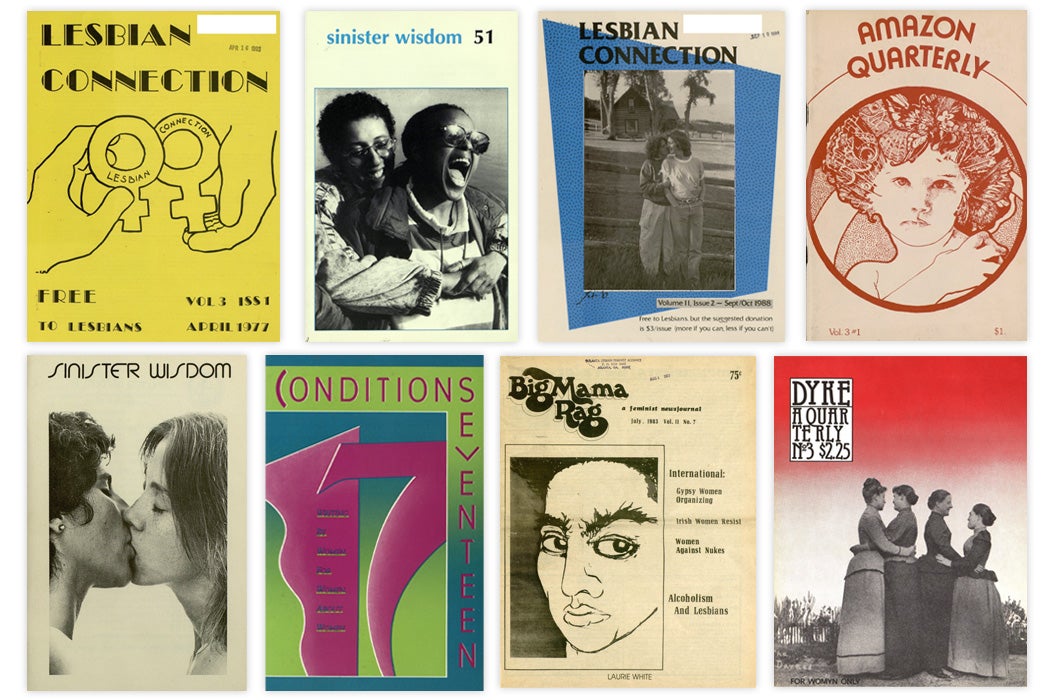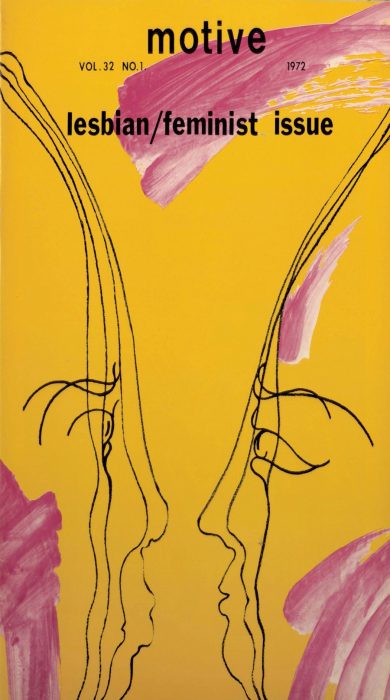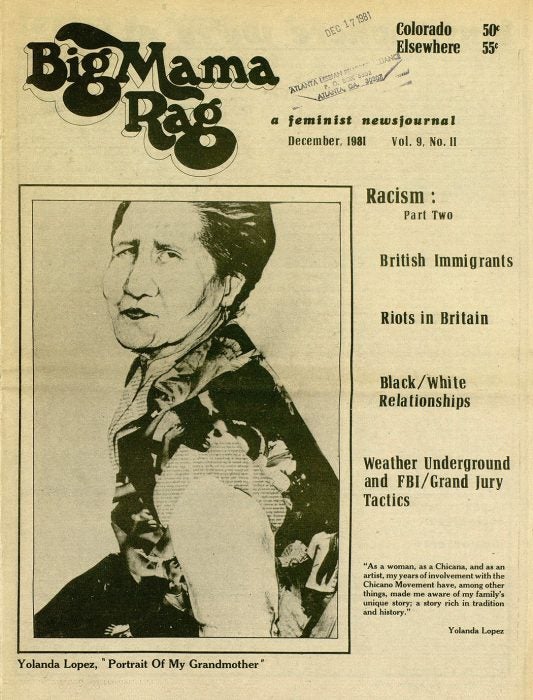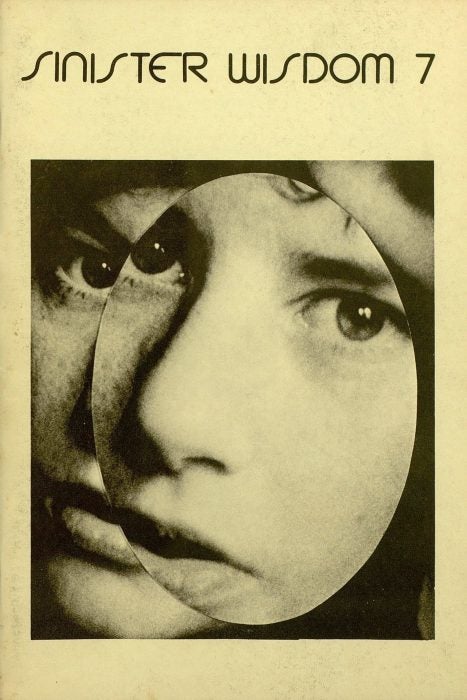Before Zoom, before Twitter, before Tik-Tok and Instagram and the 24/7 news cycle, information was more of a trickle than a gush. That was true for the pre-Internet culture as a whole, but it was especially the case for the burgeoning LGBTQ+ movement in the period from Stonewall through the repressive Reagan-Bush years. There was risk simply in seeking out information about such a despised community. Gay bars—in urban areas that had them at all—were often our only social medium. Meetings and demonstrations were organized through telephone trees, or via posters slicked onto telephone poles with wheat paste, usually in the dead of night.
One place where we usually didn’t look for our own reflection was in the mainstream media. The New York Times today runs features about the butch lesbian influence on fashion and the challenges facing pregnant trans men. But it wasn’t until 1987 that the paper’s “Manual of Style and Usage” even permitted the word “gay” to describe queer people or culture. Other news organizations were no better. In the eighties, AIDS did receive plenty of media news coverage, but it often stereotyped gay men as immoral, irresponsible spreaders of “the gay plague.” Lesbians and transgender people were even more invisible, except for the odd homicidal maniac film character.
Anti-gay violence didn’t become part of the American conversation until the horrific murder of Matthew Shepard in 1998. But I personally remember being terrified by two different incidents—one in 1988 and the other in 1996—of brutal murders of lesbians couples on the Appalachian Trail. The struggles of gay partners who had no access to the legal benefits of marriage was another story not on the mainstream media radar until the twenty-first century—this despite countless instances during the AIDS crisis of men being barred from their lovers’ hospital rooms and funerals, and thrown out of homes they had shared. Then there was the case of Sharon Kowalski, who suffered severe brain injuries and partial paralysis in a car accident in Minnesota in 1983. Although she had lived for four years with her partner, Karen Thompson, her birth family denied that she was a lesbian, refused visitation to Thompson, and even brought a physician into court who testified that if Kowalski were allowed to be around Thompson, she would be at risk for sexual abuse. It took Thompson over eight years to win guardianship and to bring her partner home.
These were our collective queer nightmares—and the nightly news response was crickets. But I knew about these stories, and many more that affected my life, because I subscribed to multiple alternative gay and lesbian feminist publications. The queer ones generally arrived in a plain brown wrapper to prevent you from being outed to your mail carrier or other household members. In an era in which the President of the United States refused even to say the word “AIDS,” they were messages in a bottle.
Weekly Newsletter
Although I later voraciously read, and occasionally wrote for, the alternative queer press, my professional roots were in mainstream news. I got a lesson in the limitations of its ability to take the radical feminist movement seriously at the same time that I learned about the existence of the radical feminist movement, period. It was the fall of 1968. I had just been hired as a reporter at the New York Post, then a liberal daily tabloid. The city desk assigned me to go interview Robin Morgan, the organizer of a group of women who were planning to picket the Miss America pageant in Atlantic City. My editors envisioned a funny story: because the pageant was a revered, apple pie American institution and who could be against it except a bunch of ridiculous losers? But halfway through the interview, everything Morgan was saying about the objectification of women in beauty contests made so much sense that I blurted, “where can I join?”
Back in the city room, I tried to write a story that was snappy, but respectful. The feminists had planned to hold a “freedom bonfire,” incinerating everything from bras and girdles to copies of Cosmopolitan magazine. I loftily compared this effort to the heroic young men of the era who were burning their draft cards to protest the Vietnam War. But the un-nuanced headline written by the copy desk for my article—“Bra Burners and Miss America”—pretty much gave my editors the laugh they were looking for. And an idiotic trope was born.
The following fall I was on a bus to Atlantic City, not as a journalist but as a demonstrator. I soon joined a consciousness raising group with several women I met at the protest. One of the first publications we passed around, pored over and ingested was the special March-April 1969 “On the Liberation of Women” issue of Motive magazine, guest-edited by, among others, Robin Morgan. I still have a stained and dog-eared copy. Although most of the content seems familiar now, it was head-explodingly cutting edge to my friends and me at the time. The articles connected feminist theory with racism, consumerism, leftist politics, psychiatry and beyond. There was also a long piece on “The Realities of Lesbianism” by Del Martin and Phyllis Lyon. I don’t particularly remember reading that article, although rereading it now, I am struck by the line that “there are some women who make this discovery about themselves much later in life – after they have been married and had children.”
At the time I became an active feminist, I was heterosexual, married and planning a family. I was not someone with a tortured closeted secret, or who had ever even had much curiosity about lesbians. But second-wave feminism was the cradle of the lesbian feminist movement, and it was impossible to be a feminist in that era, and not be reading constantly about lesbians. In fact, Motive’s next feminist issue, in 1972, was devoted exclusively to lesbian feminism. The whole point of raising one’s consciousness was to look at every aspect of female experience—housework, wolf whistles, motherhood, makeup, orgasms, career ambition, domestic violence, menstruation, and yes, lesbianism—with new eyes. At some point in my movement travels I met Rita Mae Brown, not yet a well-known author (in fact, I believe she was mostly living in her car). She and several of her friends came to speak to our consciousness-raising group one night when the weekly topic was lesbianism. Later she joined the Washington, D.C., lesbian separatist collective The Furies and sent me several copies of their newsletter. It was eye-opening to learn about women who were consciously trying to build an alternative, female-centered society.
From all of this reading I understood—cerebrally anyway—that lesbians were pretty much like every other feminist but that they deserved special respect because they put all of their political and personal energy into women. And so years later, when I unexpectedly found myself attracted to a woman, there was absolutely no shame or anguish attached to it. I felt like I was aceing an exam that I had been cramming for without even knowing that I’d need it.
Eventually I left the Post and was, for the better part of a decade, a part-time staff writer for Ms. Magazine. Ms. was unabashedly radical compared with other women’s magazines, but it was largely heterosexual in both its editorial staff and its coverage. Every time the magazine did bravely publish an article mentioning lesbianism (or abortion), it would lose advertising. My editors triaged and did what they could. In the fall of 1980, for example, I wrote an essay about the need for same-sex marriage; it didn’t see the light of print until February, 1984. (No one could have remotely imagined at the time that the United States would have queer weddings before it had an Equal Rights Amendment.)
Alternative “women’s” publications on the other hand were overwhelmingly the provenance of lesbians, often exclusively or at least explicitly. For instance, the journal Conditions described itself on its title page as “a feminist magazine of writing by women/ with an emphasis on writing by lesbians.” Sinister Wisdom was dedicated to “the lesbian imagination in all women.” One of my duties at Ms. was to read those two journals, along with Big Mama Rag, DYKE, Amazon Quarterly, Lesbian Tide, Lesbian Connection, and at least a dozen other underground publications of the era, and to prepare a report every month for my editors. Most of what I reported never made its way into the pages of Ms., but it was a way for the staff to stay in touch with the grass roots. There was some overlap in what I was reading and what Ms. was publishing (for instance, wherever you were on the Kinsey Scale, you presumably were pro-choice and favored the ERA) but the alternative women’s publications had stories you could find nowhere else. So did their male-oriented counterparts.
Gay men in that era were furiously debating whether closing down bathhouse culture was a compassionate act of community preservation or an assault on sexual liberty. Lesbians were having passionate arguments about whether porn could be feminist, and whether trans women should be welcome at festivals. There were opinions on whether the rainbow flag, the pink triangle, or the labyrs was a better movement symbol. Some papers had personals ads that helped pre-Tinder queers meet a mate. You could find a gay softball team or a lesbian Taekwondo class. You could also get advice that wasn’t being spooned out in Playboy and the Ladies Home Journal: on poppers, condoms, cock rings, bears, sex toys, butch-femme sexuality, bisexuality, non-monogamy, sadomasochism, genderfuck, and how to artificially inseminate yourself or your girlfriend with a turkey baster.
There was grit and talent galore. While other Americans were listening to Madonna and Michael Jackson, lesbian feminists (and the publications they read) were obsessed with singers like Meg Christian, Alix Dobkin, and Cris Williamson, all part of the phenomenon known as women’s music. Queer people of color like Marlon Riggs, Barbara Smith and Jewelle Gomez were writing about their experiences of intersectionality before it even had a name. You could read articles by cultural giants like Adrienne Rich, Audre Lorde, and Edmund White. And then there were the visual artists: Alison Bechdel’s brilliant “Dykes to Watch Out For” cartoon serial, the Southern Gothic graphic novels of Howard Cruse, the homoerotic art of Tom of Finland, and the lesboerotic photography of Tee Corinne. (Don’t miss the cover of Sinister Wisdom, Volume I, Issue 3.)
These publications are a time capsule—a chronicle of a point in history when a mocked and maligned minority became a mass movement. But by their very existence they were also part of the crucial process of helping that movement survive—and thrive.










